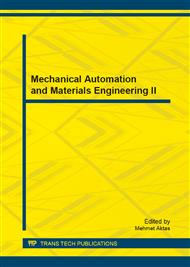p.79
p.87
p.92
p.97
p.102
p.108
p.112
p.117
p.125
Impact Simulation of a Crashworthy Composite Fuselage Section with Energy-Absorbing Floor
Abstract:
A 7.8m/s vertical drop simulate of a full composite fuselage section was conducted with energy-absorbing floor to evaluate the crashworthiness features of the fuselage section and to predict its dynamic response to dummies in future. The 1.52m diameter fuselage section consists of a high strength upper fuselage frame, one stiff structural floor and an energy-absorbing subfloor constructed of Rohacell foam blocks. The experimental data from literature [6] were analyzed and correlated with predictions from an impact simulation developed using the nonlinear explicit transient dynamic computer code MSC.Dytran. The simulated average acceleration did not exceed 13g, by contrast with experimental results, whose relative error is less than 11%. The numerical simulation results agree with experiments well.
Info:
Periodical:
Pages:
102-107
Citation:
Online since:
June 2014
Authors:
Price:
Сopyright:
© 2014 Trans Tech Publications Ltd. All Rights Reserved
Share:
Citation:


